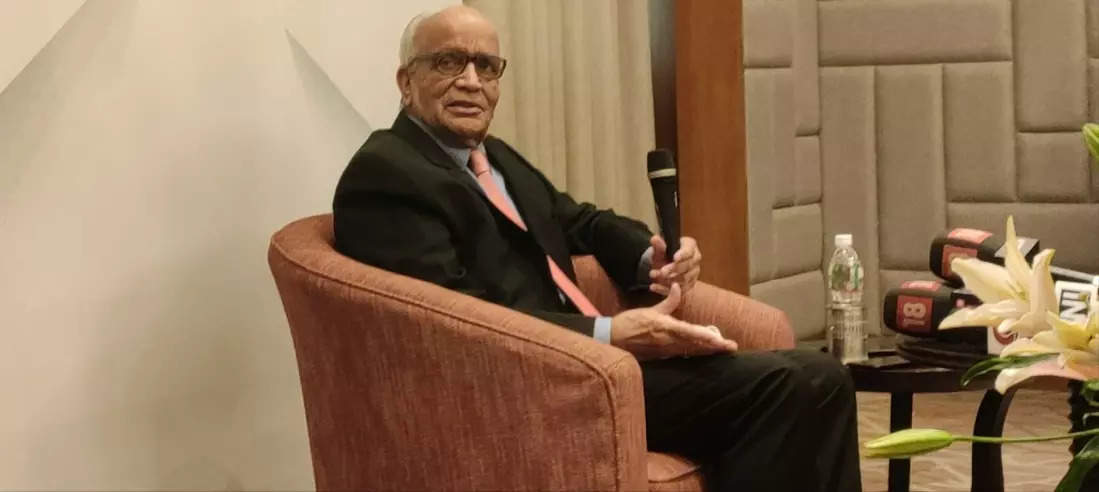
New Delhi: For India, with Maruti Suzuki (erstwhile Maruti Udyog) started a phase of mass scale mobility with more affordable, reliable, small cars 40 years ago. That helped the OEM reach the numero uno position by a wide margin. However, with growing competition and changing customer preference, the OEM saw its enviable over 50 % market share dip to an 8-year low of 43% in FY22.
While it may be a cause of concern for the company, it’s also good in a way, says R C Bhargava, Chairman, Maruti Suzuki. “I think it’s good in a sense because it jolts us out of that comfort zone and makes us work that little bit harder to get back,” he said during a media interaction on the OEM crossing the 40-year milestone.
Even after the erosion of market share, Maruti Suzuki is the market leader by a big margin of over 25 percentage points over the number two player. That level of leadership in business could also lead to complacency, and that is what Bhargava says Maruti Suzuki will have to avoid at any cost.
“If you start thinking that I’m number one and I will always remain number one, I don’t have to do anything, then I think, you will not be number one for very long,” the octogenarian industry veteran who joined Maruti Suzuki (then Maruti Udyog) as an OSD (officer on special duty) in 1983, said, maybe also as a piece of advice for his company.
A key reason for Maruti Suzuki’s reducing dominance in the Indian passenger vehicle market has been the growth of the SUV segment. The SUV wave saw this segment grow from less than 14% in 2015, to 40% now. The OEM’s sole SUV model Brezza will be joined by the Grand Vitara next month.
That addition is expected to help Maruti Suzuki regain market share. While that could be a reason for Maruti Suzuki to cheer, Bhargava is concerned over a large population’s dream of owning a car becoming difficult to realise. Rising trend of car prices, also due to regulatory costs, fuels getting pricier, and growing interest rates, are adversely impacting not only small cars but also the lower part of the two-wheeler market.
“Concerned” about the movement where the small car market is “getting squeezed”, while the larger vehicles see a growing trend, Bhargava said, “I don’t like a situation where the large masses of people who for decades had an aspiration of moving up are finding their dreams moving further away.”
As for the impact of the trend on Maruti Suzuki’s market performance, Bhargava said, “it’s not a major concern as it is moving into the bigger vehicle segments even though a “little late”, to maintain market share and profitability”.
The biggest factor that Maruti Suzuki is betting on for business sustainability, apart from the products, is “the consumer of India”. After all, the Indian consumers’ growing demand helped the OEM to grow from selling only 852 vehicles in 1983-84 (December to March), to achieving sales of 1.36 million units in 2021-22.
Batting for incentivisation of all new technologies
As the industry progresses towards the electrification era, Maruti Suzuki has no choice but to enter the EV space. It’s a space where technology cost would make it extremely challenging for Maruti Suzuki to sustain its ‘affordable mobility’ pitch.
Suzuki’s INR 10,400-crore investment plan for manufacturing EVs and EV batteries is expected to help Maruti Suzuki to tackle that challenge to some extent.
On Sunday, Prime Minister will lay the foundation stones of two key projects of Suzuki group in India- the Suzuki Motor Gujarat EV battery manufacturing facility at Hansalpur, Gujarat and Maruti Suzuki’s upcoming vehicle manufacturing facility in Kharkhoda, Haryana.
The facility in Hansalpur, Gujarat will be set up with an investment of around INR 73,000 crore to manufacture advanced chemistry cell batteries for EVs.
Bharagava is in favour of petrol and diesel vehicles being discouraged. At the same time, electricity also shouldn’t be taken as the only technological solution to clean mobility.
His argument is based on India’s average purchasing power, which is less than that in the Western countries, and the still untapped growth potential of ICE (internal combustion engine) vehicles here.
Incentivisation of other “intermediate” technologies such as hybrids and CNG is what Bharagava is batting for.















